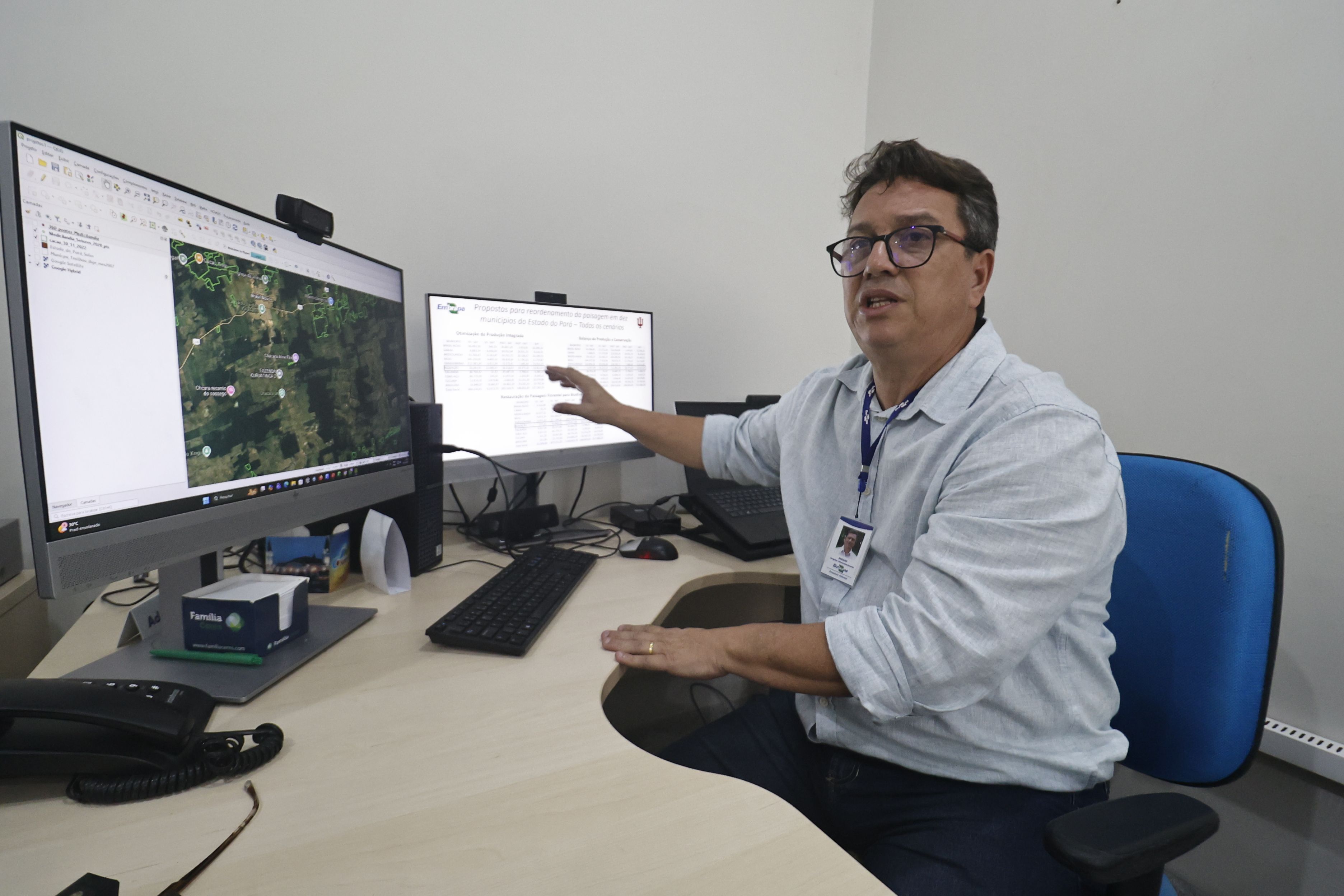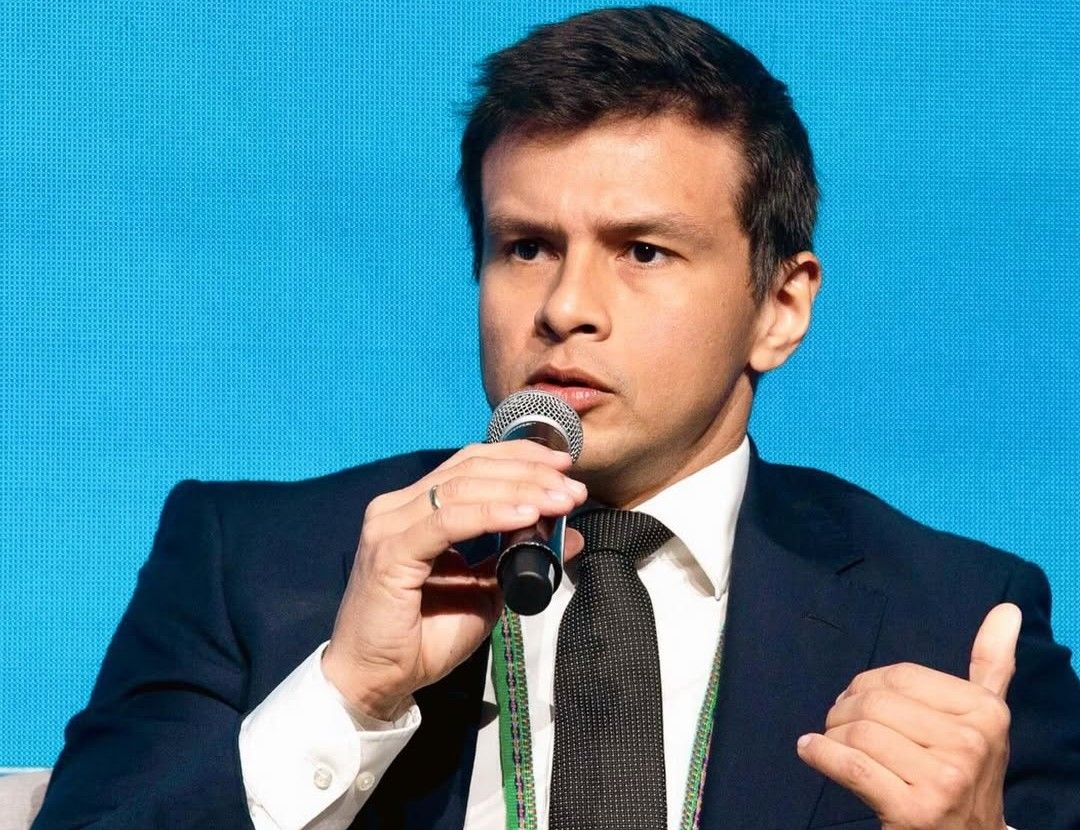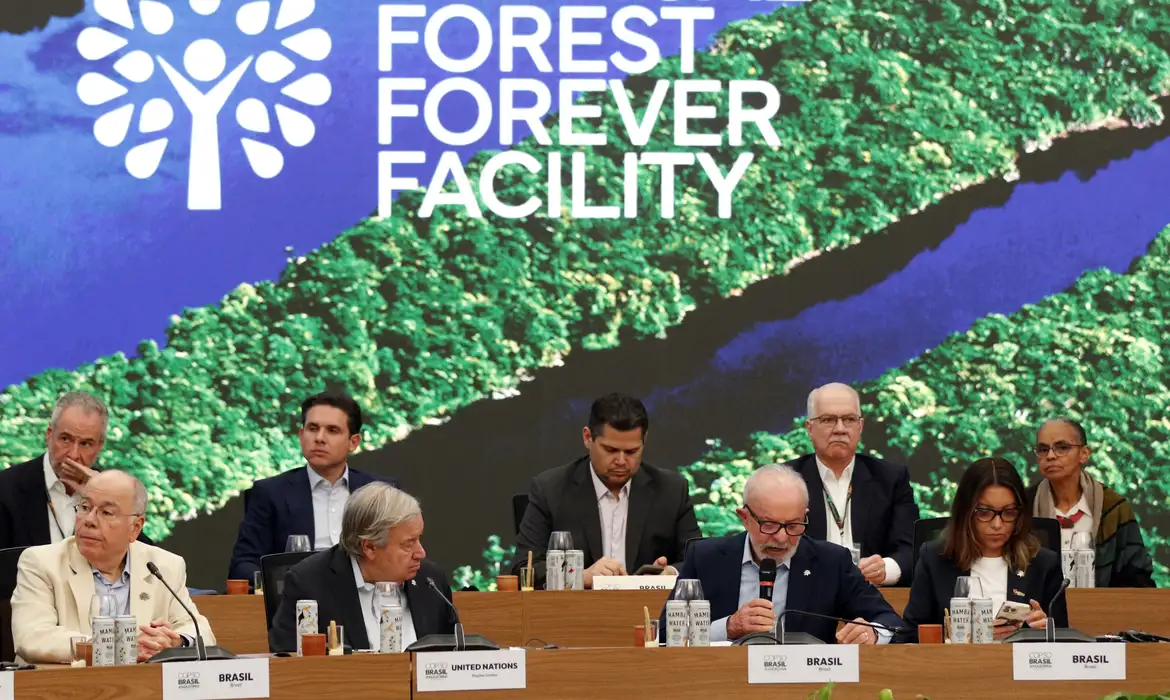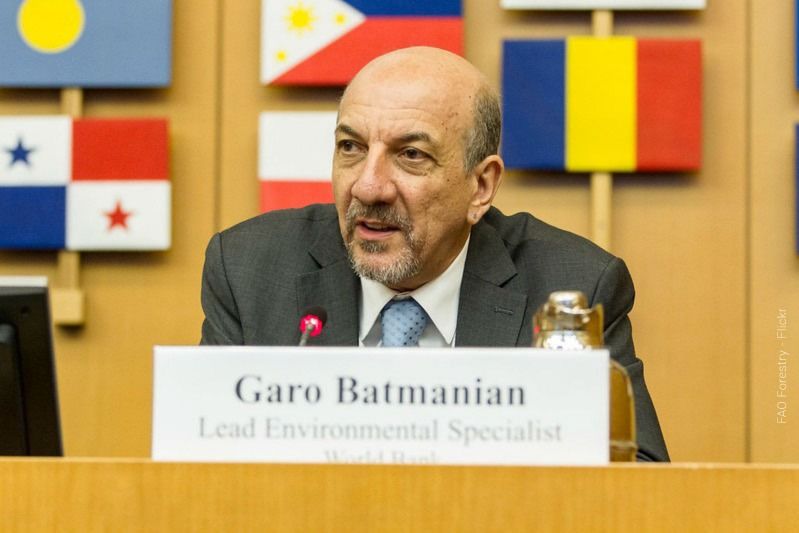One of the issues being discussed not only during the 2025 United Nations Climate Change Conference (COP 30), held in Belém, but also during previous COPs, is the end of deforestation worldwide. During COP 26, held in Glasgow, Scotland, in 2021, participating countries agreed to halt and reverse forest loss by 2030.
During Belém Climate Summit, held on November 6 and 7, on the eve of COP 30, President Luiz Inácio Lula da Silva launched the Tropical Forest Forever Facility (TFFF), an initiative aimed at rewarding countries that conserve or restore their tropical or humid subtropical forests. These biomes play a crucial role in capturing carbon from the atmosphere, while their deforestation contributes to the increase of greenhouse gases that cause global warming.
However, in addition to inhibting deforestation, it is also a must to reforest areas already degraded by human activity, increasing vegetation cover in the region. A study led by the Empresa Brasileira de Agropecuária (Embrapa) Amazônia Oriental [Brazilian Agricultural Research Corporation Eastern Amazon] intends to map the ‘stepping stones’ for this type of activity in Pará.
PRIORITIES
The project “O processo de reordenamento da paisagem produtiva sustentável via cultivos agrícolas perenes: uma transição à bioeconomia” [The Process of Reorganizing the Sustainable Productive Landscape through Perennial Crop Cultivation: A Transition to the Bioeconomy], coordinated by agronomist and Embrapa researcher Adriano Venturieri and funded by the Fundação Amazônia de Amparo a Estudos e Pesquisas (FAPESPA) [Amazon Foundation for the Support of Studies and Research], identifies priority areas for productive forest restoration, as well as the activities best suited to each territory.
“I focused on the state of Pará, considering its integration regions and municipalities. The restoration proposals are different for each location. For example, the areas in northeastern Pará differ from those in the southeast, as well as from those along the Trans-Amazonian Highway, because they have undergobe different settlement processes, present different soils, and are home to different populations. Therefore, the solutions must also be different,” he emphasized.
According to the specialist, the idea was to answer some key questions to support public policies in the transition toward a bioeconomy. “We sought to understand where the altered areas are, how they are currently being used, and what their best potential uses might be. And this always involves considering those who are in the field, the producers, and what they are interested in doing. There’s no point in designing these policies only in Brasília or at the UN [United Nations],” he added.

PROCESS
To achieve the results, the research took into account spatial information produced by institutions such as the Instituto Nacional de Pesquisas Espaciais (INPE) [National Institute for Space Research], Embrapa itself, and the Instituto Brasileiro de Geografia e Estatística (IBGE) [Brazilian Institute of Geography and Statistics]. Areas from ten municipalities across different regions of Pará were analyzed. “We worked with deforestation data to determine how much there is, where it is located, and how these areas are being used, along with data on agricultural suitability, the date of deforestation, and other variables. Our understanding is that there is no longer any need for deforestation,” says Venturieri.
Different paths, similar results
Based on the data collected, several potential scenarios were developed to guide restoration strategies. “The trajectories may differ, yet we expect the final outcomes to be quite similar. This will depend on both public policy decision-makers and producers. I have spoken with many of them, and some show little interest in the proposed activities. One producer, for instance, mentioned that she envisions her property as a beautiful park filled with cattle. That is her perspective, and one shared by many, as they often perceive crop cultivation as more complex and therefore prefer livestock production. Other producers, however, are interested (in agriculture) but require information, technical assistance, and guidance on what they can produce and how to do it. The implementation of agroforestry systems, for example, demands not only practical knowledge but also an adequate and qualified workforce,” explained agronomist Adriano Venturieri.
According to Venturieri, there are extensive altered areas in Pará that can be converted. “The data show, for instance, the amount of pastureland that can be transformed into agroforestry systems (SAF) or left for natural restoration, as well as areas that can be converted into integrated crop-livestock-forest systems (ILPF). In the southern region of the state, for example, livestock production is very strong, it is a long-standing tradition. Therefore, we often emphasize solutions that include the livestock component, such as ILPF. In northeastern Pará, however, in municipalities such as Moju or Tomé-Açu, agroforestry systems are more prevalent, and thus public policies can be designed to strengthen this approach,” he emphasized.

INCOME
The environmental benefits of restoring these areas in a productive way are numerous, such as soil and water protection, increased biodiversity, and carbon capture from the atmosphere. However, according to Venturieri, income generation is a key factor. “We understand that one of the main causes of landscape degradation is hunger. People need to eat, they need to produce. When you promote productive restoration, you not only achieve ecosystem benefits but also generate income for the producer, and that is the most important aspect,” he pointed out.
State plan aims to promote restoration
During COP 28, held in Dubai in 2023, the government of Pará launched the State Plan for the Recovery of Native Vegetation (PRVN). The initiative aims to restore 5.6 million hectares through reforestation efforts. At COP 29, held in Baku last year, one of the instruments to implement the restoration plan was announced: the concession of the Triunfo do Xingu Recovery Unit (URTX), located in Altamira, in the southwestern region of the state.
The URTX is a pilot project that granted the area to the company Systemica. The contract, signed in July of this year, establishes 40 years of concession for the recovery of 10.3 thousand hectares within part of the Triunfo do Xingu Environmental Protection Area (APA). The initiative is expected to result in the sequestration of 3.7 million tons of carbon from the atmosphere. The estimated investment amounts to BRL 258 million, with a projected total revenue of BRL 869 million, in addition to creating approximately two thousand jobs in the region.
PROGRESS
According to Raul Protázio Romão, Secretary of Environment, Climate and Sustainability of the State of Pará, the state government is making progress in the creation and implementation of the Concession Program for Restoration under the PRVN framework.

“We aim to promote large-scale forest restoration, with the support of the Banco Interamericano de Desenvolvimento - BID [Inter-American Development Bank] and Banco Nacional de Desenvolvimento Econômico e Social - BNDES [Brazilian Development Bank] for structuring new Restoration Units. The next area designated for restoration is expected to include the planting of 4 million seedlings and the recovery of 15.7 thousand hectares, resulting in the removal of 4.2 million tons of carbon over a 40-year period. An investment of BRL 256 million is planned, generating six thousand direct and indirect jobs, a total revenue of BRL 1.125 billion, and an estimated net profit of BRL 621 million, with capital return expected within 14.5 years, consolidating Pará as a pioneer in concessions aimed at sustainable forest restoration,” says the secretary.
TFFF set to boost resources
The Tropical Forest Forever Facility, proposed by the Brazilian government during Belém Climate Summit and endorsed by 53 countries from all continents in the launch declaration, promises to boost the resources available for both forest conservation and restoration, including in the Amazon region.
According to President Lula, in his launch speech, the ecosystem services that forests provide to humanity must be properly compensated, as well as the people who protect them.
“The international green and climate funds are not up to the challenges posed by climate change. With this sense of urgency, since COP 28 we have gathered a group of tropical forest countries and investor countries to design this mechanism. We have the support of international organizations and civil society. The TFFF is not based on donations. Its role will be complementary to mechanisms that pay for the reduction of greenhouse gas emissions. Sovereign investments from developed and developing countries will leverage a mixed-capital fund. The portfolio will be diversified into stocks and bonds. The profits generated will be shared between tropical forest countries and investors. The resources will go directly to national governments, which will be able to ensure sovereign long-term programs,” explained the Brazilian president.

Fixed income insures investment
Garo Batmanian, Director-General of the Brazilian Forest Service, explains the difference between the TFFF proposal and other environmental funds. “It will be an investment fund, like those offered by commercial banks. It’s a fixed-income fund. So the money is not just a donation, it’s an investment. We invest in the fund, and the fund pays back the interest rate we agree on. For example, let’s say that with contributions from participating countries, we raise US$25 billion. That would leverage another US$100 billion from the private market, giving us a total of US$125 billion to use,” he explains.
Brazil was the first country to announce an investment of US$1 billion. By the launch date, more than US$5.5 billion had already been confirmed for the initiative: in addition to Brazil, Norway committed US$3 billion over the next ten years; Indonesia, US$1 billion; France, US$577 million through 2030; and Portugal, US$1 million.
CRITERIA
A total of 73 developing countries may benefit from the fund, as long as they meet the required criteria. Each country is expected to receive up to four dollars per hectare of preserved tropical forest. “All countries that have tropical or humid subtropical forests can participate if they meet the performance conditions, starting with having a deforestation rate below the global average. The TFFF rewards countries that already have deforestation under control. These countries still need support to keep deforestation rates low or even bring them to zero. They must also have a plan for how to use the funds, because if they don’t have one, they haven’t managed to keep deforestation low,” explains Batmanian.

The resources will go directly to national governments, which will decide how to use them. It will be possible, for instance, to allocate the funds to state programs, such as the one in Pará. The money can be used both for conserving native forests and for restoring already degraded areas.
COMMUNITIES
However, according to the fund’s rules, 20% of the total amount must be allocated directly to traditional communities, such as Indigenous and Quilombola groups in the Brazilian case. “They will be the ones to decide how to use these resources, as long as they are directed toward forest conservation or the sustainable use of resources, for instance through bioeconomy initiatives. One year after joining the fund, a governance mechanism must be established specifically for these traditional populations,” the director emphasizes.
According to Adriano Venturieri, researcher from Embrapa, the TFFF is good news and can support the kind of productive restoration he advocates. “But it’s essential that this money actually reaches those on the ground, the producers. If the funds don’t reach them so they can take action, implement an agroforestry system, or restore an area, nothing will change. There must be specific policies for restoration areas and incentives for people to carry them out,” he concludes.
INSTITUTIONAL PARTNERSHIP
The production of Liberal Amazon is one of the initiatives of the Technical Cooperation Agreement between the Liberal Group and the Federal University of Pará. The articles involving research from UFPA are revised by professionals from the academy. The translation of the content is also provided by the agreement, through the research project ET-Multi: Translation Studies: multifaces and multisemiotics.